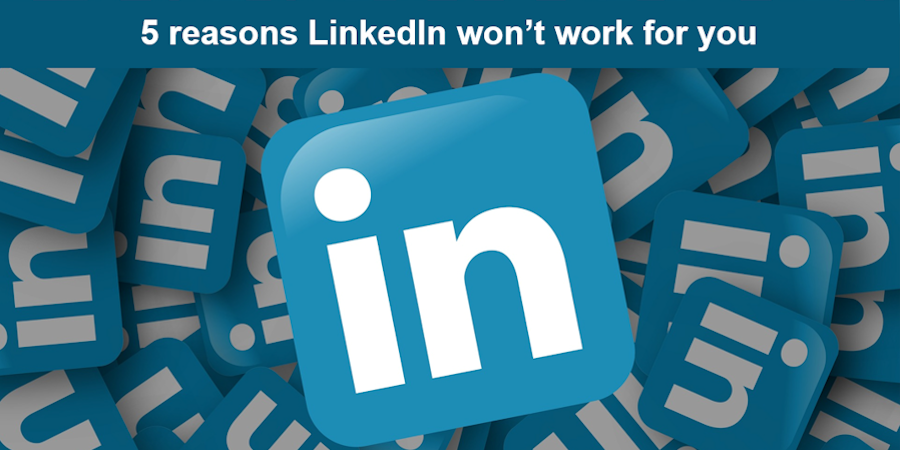
I hear people complaining that LinkedIn is ‘stagnant’, ‘out-of-date’, ‘useless’ and other derogatory statements. While nothing can ever be called perfect, I find LinkedIn is a powerful platform for business – so what makes my experience so different from theirs?
These are some of the things that will ensure LinkedIn doesn’t work for you:
- The wrong image: your headshot should be a professional image of your head (and maybe a bit of your shoulders). People make judgments based on what they see. Quite apart from the fact that the LinkedIn T&Cs state that it must be a recognisable image of the account holder, people buy people and like to see who they’re communicating with so if your profile image is:
- A full-length shot
- A picture of your product
- Your logo
- Your premises
- A selfie taken while at a party
- A shot taken by a friend in your lounge with all kinds of things in the background
- A bit blurry
- A caricature
- A silhouette
- Showing more than one person
- With you wearing anything you wouldn’t wear to a client meeting (even if you can only see a bit of it)
Change it!
- Your job title instead of a professional headline. This is the line of text that sits just under your name on your profile. If it’s your job title it’s not very interesting, whereas if you have something that lets potential clients recognise themselves, increasing the chances of them scrolling down to read more information. You have 120 characters to play with, use them well.
- A boring summary. Your summary is an opportunity to impress people, not bore the socks off them. Think of your ideal client and answer these questions: What are their burning questions? How can you help them? What are they interested in? It will bring your summary to life. Also write in the first person, it’s not a professional biography to be presented by someone else, it’s your personal
- Setting up your profile like a CV – unless you’re actively job-hunting. It should be focused on what your company can offer. If you’re an employee, you’ll get many more brownie points by connecting with potential clients and be building a strong track record for the future. If you’re a business owner see it as a marketing tool.
- Treating it as a numbers game: If you want to build relationships you need to make connections, but quantity is not necessarily quality. That doesn’t mean you shouldn’t accept connections, that’s what networking is about, but it does mean that it’s not having lots of connections – it’s about having lots of conversations.
